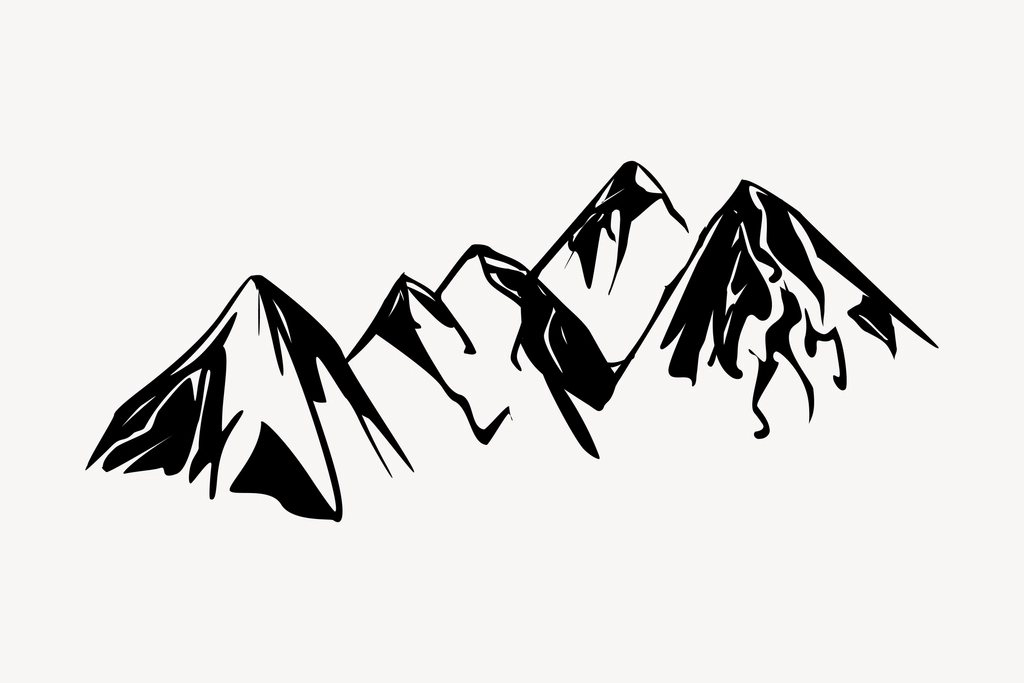Hi, welcome to this hall on the types of mountains, characteristics, important.
Table Of Contents
- Meaning of mountain
- Types of mountains
- Characteristics of mountains
- Mode of formation
- Importance of mountain to man
- Disadvantages of mountains
- Revision Questions
Meaning of Mountain
Meaning: Mountains are great elevated land surfaces resulting from intense action of internal forces. That is, mountains is an imposing rock rising from the earth’s surface, usually above 600m in height. It may be single, isolated feature with steep slopes and shows distinct peaks. It may also spread extensively as a mountain range.

Mountains are classified according to their mode of formation, resulting in four major types of mountains. These are:
- Fold mountains
- Block mountains
- Volcanic mountains
- Residual mountains.
(a) Fold Mountains
Characteristics Of Fold Mountains
- They contain old, hard rocks with steep sides.
- They have wrinkling or folding appearance and shows distinct peaks of great heights.
- Fold mountains exist in layered form.
- They are soft, have anticlines and synclines.
- Folding shortens the earth’s crust.
- They form the most widespread types of mountains and are noted for active volcanoes.
- They form the highest mountain ranges.
- Examples of fold mountains include Himalayas, Rockies, Andes, Alps and Atlas mountains.
Mode of formation: Fold types of mountains are formed by large-scale horizontal earth movement as a result of stress and compressional forces which cause expansion or contraction of some parts of the earth. Such stresses therefore subject the rocks to compressional forces.
The compressional forces produce wrinkling or folding of the crust of the earth. The upfolds of the wrinkles are anticlines while the downfolds are called syncline.
(b) Block Mountains
Characteristics Of Block Mountains
- Block mountains are made up of old hard rocks with flat or slightly sloping surfaces.
- They have steep sides.
- They are associated with rift valleys.
- It is a block between two faults.
- It has fairly steep, straight edges.
- Block mountains are usually very high.
- Examples of block mountains are Hunstruck mountain; Voges mountains, the black forest of the Rhingland and Ruwenzori.
Mode of formation: Block types of mountains are formed as a result of lateral or vertical earth movement. They are also formed when the earth cracks due to faulting. Faulting may result from tensional forces or compressional forces. Tensional forces are those that tend to pull the earth crust apart and the result in a normal fault, while compressional forces are those that shorten the crust to produce a reverse or thrust fault.
Therefore, if a block of rocks between two normal faults rises or the land on either side of the block subsides, a block mountain or horst is formed.
(c) Rift Valley
Characteristics Of Rift Valley
- There is a trough between two parallel faults.
- It has steep-sided walls.
- It has also flat bud, at times irregular floor.
- Rift valleys are usually very deep.
Examples of rift Valley are: Rhine Valley, Dead Sea, Jordan Valley, Great East African rift Valley which is about 48,000km.
It should be noted that land forms produced by faulting and Rift Valley and block mountains.
Mode of formation: Rift Valley occurs when they are tensional and compression forces operating. Two parallel fault occur and there will be gravitational force leading to the sinking of the land between the fault. The side blocks will be uplifted. The rift Valley will be steeped or steep-sided where there are senses of parallel faults.
(d) Volcanic Mountains
Characteristics Of Volcanic Mountains
- Volcanic mountains are made up of lava.
- They have irregular side with conical shape.
- Materials that made up volcanic mountains include ash, volcanic bombs, cinders, etc which are arranged in layers.
- Examples are mountain Fuji (Japan), mountain Mayon (Philippines), mountain Kilimanjaro (Kenya), Elgon, and Cameroon (all in Africa).
Mode of formation: Volcanic mountains are formed from volcanoes which are built from materials (molten magma) ejected through fissures or vent in the earth’s crust. The materials include molten lava, volcanic bombs, cinders, Ash, dust and liquid mud. They fall around the vent in successive layers, building up and extensive volcanic cone. Volcanic mountains are also called mountains of accumulation.
(e) Residual Mountains
Characteristics Of Residual Mountains
- Residual mountains are formed from the remains of already existing mountains.
- They have irregular surfaces with steep sides.
- They occur in varying heights and size and are caused by agents of denudation.
- Examples are Mt. Manodnock (USA), Highlands of Scotland, Highlands of Scandinavia and Decon plateau.
Mode of formation: Residual mountains are formed from already existing mountains which are lowered or reduced by agents of denudation such as running water, ice and wind. Residual mountains are therefore, the remaining of already existing high mountains. Some hard part and the very resistant parts of the existing mountains remains after the lowering of the upper part. This remaining part is called residual mountains which are also called mountains of denudation.
Importance Of Mountain To Man Or Uses
- Tourist attractions: Examples are holiday resort like Olumo rocks, Idanre hills and the Swiss Alps.
- Sources of rivers: Example is River Niger from the guinea Highlands.
- Minerals: These are mined from the highlands, example, tin and columbite from Jos plateau; Coal from Udi Hills; Gold from the Rockies.
- Relief rain: Mountains encourage relief rain formation, e.g, Jos and Cameroon mountains.
- For construction: Rocks from Highlands are used for construction, e.g, the rocks from the shai Hill were used to construct the Tema harbour in Ghana.
- Transhumance: It is practiced on mountains pasture, e.g, in Switzerland, Austria.
- Modified climate: The climate is so ideal for settlements, e.g, Jos plateau, Mount Kenya, Elgon, Kilimanjaro mountains.
- Lumbering on mountains slopes: Example is Scandinavia, known for timber, paper and pulp, and matches Industries.
- Agriculture: Examples are Terrace farming as in Jos, Biu plateau and Udi Hills.
- Natural boundaries: Example is Cameroon mountain which separate Nigeria and Cameroon.
- Site for communication equipment: Example; TV antenna, radio mast.
- Defense: Haven against Invaders, especially in the olden days.
Disadvantages Of Mountains
- Barriers to communication: Mountains are barriers to communication as they prevent roads, railway and airport construction.
- Prevent human habitation: High mountains are known to be associated with cold weather which prevent good human and animal habitation.
- Mountains promote soil erosion: Areas close to the mountains are usually associated with soil erosion due to the speed of running water down the steep slopes of mountains.
- Mountains occupy good land: Mountains at times do occupy good land that should have been used either for farming or settlement.
- Mountains soil are poor in nutrients: Mountainous areas are not good for agriculture as the soil are poor in nutrients and difficult to work on.
Revision Questions
- Name three types of mountains and give a good example of each (b) describe the characteristics and mode of formation of one of the types of mountains mentioned in (a) above.
- Highlight six positive and two negative effect of mountains to man (importance of mounting to man).
